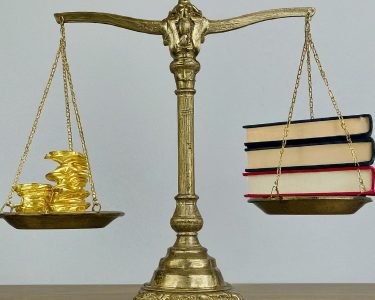Welcome to the world of economics, where every decision that you make has a ripple effect on the economy. Whether you are an individual or representing a company, it is essential to understand the economic rules that govern our society. From supply and demand to inflation and recession – we have compiled a list of vital economic principles that everyone should know in order to navigate this complex system successfully. So let’s dive into these economic rules and learn how they impact everything from your daily life to global markets!
The Rule of 72
The Rule of 72 is an important rule to know when it comes to personal finance and investing. This rule helps you determine how long it will take for your money to double, based on a given interest rate. The higher the interest rate, the shorter the time it will take for your money to double. For example, if you have $1,000 invested at a 5% interest rate, it would take 14.4 years for your investment to double (72/5). However, if you had $1,000 invested at a 10% interest rate, it would only take 7.2 years for your investment to double (72/10).
While the Rule of 72 is a helpful tool, it’s important to remember that it’s only an estimate. Your actual results may vary depending on a number of factors, including inflation and the fees associated with your investment.
The Zero Sum Game
In a zero sum game, one person’s gain is another person’s loss. This is the basic principle behind most economic activity. businesses compete for customers, workers compete for jobs, and countries compete for resources and markets.
In a global economy, competition is often portrayed as a zero sum game between nations. Countries strive to increase their exports while simultaneously decreasing their imports. This can lead to tension and conflict as countries attempt to protect their own interests at the expense of others.
However, it is important to remember that trade is not a zero sum game. When two countries trade with each other, both sides can benefit. Each country can specialize in the production of goods that they are good at producing and then trade for goods that they are not as good at producing. This increases efficiency and allows both countries to consume more than they could if they were trying to produce everything on their own.
The80/20 Rule
The 80/20 rule is an economic principle that states that 80% of the effects come from 20% of the causes. In other words, a small number of factors are responsible for a large majority of the results. This principle can be applied to many areas of life, including business, personal finance, and even relationships.
The 80/20 rule has its origins in Italian economist Vilfredo Pareto’s observation that 20% of the people in Italy owned 80% of the wealth. Pareto noticed that this unequal distribution was also true for other things, like peas in a pod (20% of the peas contain 80% of the seeds). He called this phenomenon the “80/20 principle,” and it has since been used to describe all sorts of situations where a small minority disproportionately affects the majority.
In business, the 80/20 rule is often used to help managers identify which activities are most important and worthy of their time and attention. For example, if a company wants to increase sales, they might look at their customer base and find that 20% of their customers generate 80% of their revenue. They would then focus their efforts on keeping those customers happy while also trying to attract more customers like them.
Similarly, in personal finance, you can use the 80/20 rule to figure out where you should focus your money. If you want to save money on groceries, for example, you might look at your spending
Say’s Law
In economics, Say’s Law states that supply creates its own demand. In other words, the act of producing goods and services generates income and demand for other goods and services. The law is named after the French economist Jean-Baptiste Say (1767-1832), who first articulated it.
Say’s Law has been variously interpreted over the years, but its central idea remains that production is the source of economic growth and prosperity. The implication is that governments should not try to stimulate demand directly through fiscal or monetary policy; instead, they should focus on creating an environment conducive to production and investment.
Critics of Say’s Law argue that it doesn’t always hold true in practice, and that there are times when government intervention is needed to boost demand and get the economy moving again. Nevertheless, the law continues to be a cornerstone of classical economic thinking.
Gresham’s Law
Gresham’s Law is an economic rule that holds that “bad money drives out good.” In other words, when two types of currency are in circulation, the more valuable currency will be hoarded and the less valuable currency will be used for transactions. This law is named after Sir Thomas Gresham (1519-1579), an English financier and advisor to Queen Elizabeth I.
The law is often used to explain why fiat currencies (currencies not backed by a physical commodity) tend to depreciate over time. Because fiat currencies are not backed by anything of value, they are subject to inflationary pressures. As the supply of fiat currency increases, the value of each unit decreases, leading people to hoard the more valuable currency and use the less valuable currency for transactions.
While Gresham’s Law is a useful tool for understanding currency depreciation, it is important to note that it does not always hold true. In some cases, people may use the less valuable currency for transactions simply because it is more convenient or liquid (i.e., easier to buy and sell). Additionally, central banks can influence the exchange rate between two currencies, making one currency more valuable than another even if it otherwise would not be.
How to use these economic rules in your life
There are a few basic economic rules that everyone should know in order to make the most of their personal finances. Here’s a quick rundown of some key concepts:
The Rule of 72 – This rule states that the number of years it will take for an investment to double is approximately equal to 72 divided by the interest rate. For example, if you have an investment with a 5% annual return, it will take approximately 14.4 years (72/5) for your investment to double.
The 10-10-80 Rule – This rule is a simple way of budgeting and allocating your income. Essentially, you should put 10% of your income into savings, 10% towards debt repayments, and 80% towards spending (on things like food, utility bills, transportation costs, etc.). This ensures that you are taking care of your financial obligations while still allowing yourself room to live comfortably.
The 50-30-20 Rule – Another popular budgeting method, the 50-30-20 rule suggests that you allocate 50% of your income towards essential expenses (think housing, groceries, utilities), 30% towards discretionary spending (entertainment, travel), and 20% towards savings and debt repayment. This can be a helpful way to ensure that you’re not overspending in any one area.
While there are other economic rules out there, these are three of the most important ones to know. By understanding and utilizing these
Conclusion
We hope this article has given you a better understanding of the different economic rules and their implications. While it is not necessary to understand all of these concepts in order to manage your finances, having an understanding of the basics can help you make informed decisions about investments and other related matters. With proper knowledge, you can ensure that you make sound financial choices that will benefit both yourself and your family for years to come.




